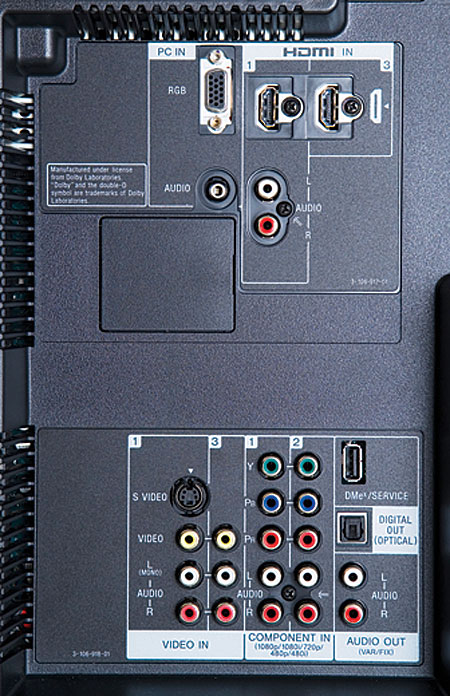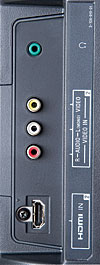Sony KDL-52XBR4 LCD TV Setup & Tests
The set I evaluated was the same sample that Tom Norton reviewed for Home Theater, which meant it was already calibrated when I got it. I'll let Tom describe the setup process:
The Sony's White Balance (color temperature) controls are available in the user menu, and they offer separate controls at the high and low ends of the brightness range, so calibrating the set is a relatively simple matter, given the right test tools and knowledge. Playing with these adjustments by eye is not recommended, though tweaking them won't harm the set in any way, and they can be easily returned to their default settings.

After initially calibrating the set as close as possible to D65 at 30 and 80 IRE (the levels typically used for adjusting the low and high color temperature, respectively), dark images and dark shadows in brighter images appeared too reddish. So I recalibrated the set to ensure that the 20 IRE brightness level (the darkest our test gear can accurately measure) did not drop below 6500K.
This pushed 30 IRE to 6700K, a bit higher than optimum, but the overall result looked significantly more uniform from bright to dark. The eye is much less sensitive to a slightly high color temperature, particularly in dark scenes, than a temperature that's too low. Note that a color temperature lower than 6500K at 20 IRE won't necessarily cause this problem with all sets.
Starting with the HQV Benchmark DVD at 480i, detail was okay but somewhat rolled off in the high-frequency horizontal bursts, and the "bridge" clip looked a bit softer than I've seen on other sets. Jaggies were moderate. The Noise Reduction control was remarkably effective without appreciably softening the picture, even at its High setting, but there wasn't much difference between Low, Medium, and High, so I set it to Low. MPEG Noise Reduction was another story—it severely softened the picture to the point of making it look out of focus!
The roller coaster showed moderate motion blur trailing it at all settings of the Motion Enhancer parameter, which controls the level of interpolation between frames.
 Setting CineMotion (the film-cadence control) to Auto1 or Auto2, the TV picked up 3:2 pulldown very quickly—in fact, there didn't seem to be any difference between the two settings. On the other hand, the mixed 3:2 film with video text crawls didn't look so good—the horizontal text crawl remained all torn up, and the vertical crawl took a second or two to stabilize, looking jerky and broken up in the meantime.
Setting CineMotion (the film-cadence control) to Auto1 or Auto2, the TV picked up 3:2 pulldown very quickly—in fact, there didn't seem to be any difference between the two settings. On the other hand, the mixed 3:2 film with video text crawls didn't look so good—the horizontal text crawl remained all torn up, and the vertical crawl took a second or two to stabilize, looking jerky and broken up in the meantime.
Switching to HQV Benchmark on HD DVD at 1080i, noise reduction was more subtle than the DVD, but the results were similar. The video resolution-loss test was solid as a rock, and jaggies were invisible. The film resolution-loss test, however, exhibited lots of shimmering in the vertical high-frequency and horizontal mid-frequency bursts at both CineMotion settings, and there was a moderate loss of detail in the stadium pan.
The Spears & Munsil test HD DVD revealed that the Sony picked up 3:2 at 1080i immediately, but it took a second or two to pick up the 2:2 video cadence.
Next, I looked at the FPD Benchmark Blu-ray test disc. When Motion Enhancer was on, there were some shimmering artifacts in the scrolling monoscope pattern, but it was cleaner and smoother than when Motion Enhancer was off. These artifacts did not appear in the other motion tests, such as a girl swinging in a hammock or a moving metronome. I didn't see much difference between the Motion Enhancer's Standard and High settings.
The pan across the map was considerably cleaner with Motion Enhancer on, but the letters still looked a bit blurry. The same was true of the passing car license plates and building signs.
As I was measuring the peak contrast of this set, I noticed that the black level slowly shifted depending on the average picture level (APL), even though all dynamic parameters were turned off. I explain this in more detail in the Measurements section, but for now, you should know that the black level remained elevated during most real-world content.




























































